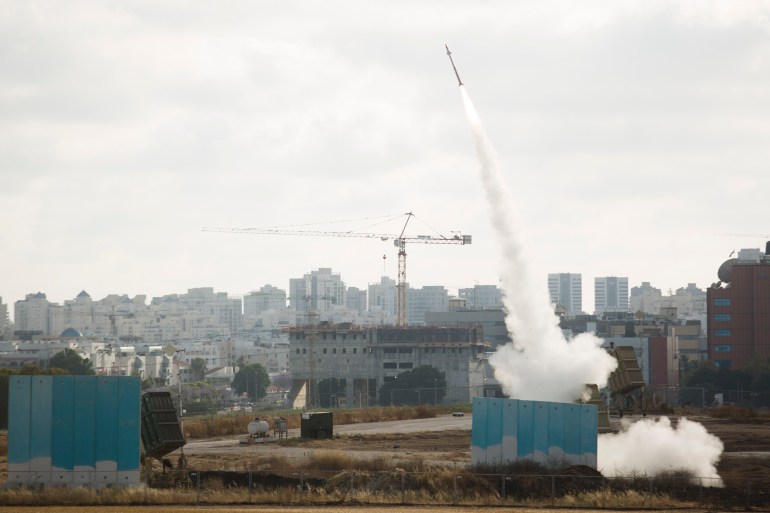In every war waged by the occupation forces on the Gaza Strip, the term Gaza envelope or the settlements of the Gaza envelope emerges as a military target for the rockets of the Palestinian resistance, to the extent that the term has become specific to the power of these rockets and the extent to which they reach and affect their scope.
What is this cover, what are the most important Israeli settlements and cities built in it, and what represents a strategy for Israel, on the opposite side of the Palestinian resistance.
Gaza strip
The sector extends over an area of 360 square kilometers, with a length of 41 kilometers and a width ranging between 5 and 15 kilometers, in the southern region of the Palestinian coastal plain on the Mediterranean.
The occupation extended its full control over the Gaza Strip since 1967, until 1994 when the Palestinian Authority began entering it under the Oslo Accords and implementing Palestinian self-rule in Gaza and Jericho.
On July 1, 1994, the late Palestinian President Yasser Arafat (Abu Ammar) entered the Gaza Strip, and the Palestinians gradually began to control the areas in which they lived in the Strip, while the occupation settlements that were established on the lands of the Strip remained.
Settlements near the Gaza Strip have been a target of the Palestinian resistance's rockets (Getty Images)
Gaza Strip Settlements
After about 10 years, then-Israeli Prime Minister Ariel Sharon put forward the plan to disengage from the Gaza Strip on February 2, 2004, which includes evacuating settlements and withdrawing completely from the Gaza Strip. The Knesset approved the plan about a year later.
The plan was implemented and the occupation forces left the Gaza Strip, the settlements were evacuated, and the Israeli settlement presence in the Gaza Strip ended on September 12, 2005, and the Israeli government announced the end of military rule in the Gaza Strip.
All settlements (25 settlements) - later known as "liberators" - were removed, and the process of withdrawal, dismantling of settlements, and evacuation of settlers (8,500 settlers) ended on September 12, 2005.
Gaza cover
Following the Israeli withdrawal from the Gaza Strip, the occupation established a "buffer zone" along the land border, and dozens of settlements remained near the Strip, which is now called the Gaza envelope, numbering about 50 settlements, located at a distance of about 40 kilometers in the vicinity of the Strip.
The number of settlers in the Gaza envelope increased from about 42,000 in 2009 to about 55,000 in 2019, an increase of 30.6%, according to a previous report by the Israeli economic website, Globes.
This envelope consists of 3 regional councils affiliated to the Israeli government, the "Eshkol Council", extending over an area of 380 square kilometers, and inhabited by more than 13,000 settlers, who live in 32 settlements.
The second is the “Ashkelon Council” and is located on 175 square kilometers, in which about 17,000 Israelis live in 4 settlements, and the third is the “Sha’ar Hanegev Council” and extends over an area of 180 square kilometers, in which there are 11 settlements, in which more than 7,000 settlers live.
The most prominent of these settlements are Kissufim, Zikim, Nahal Oz, Kiryat Malachi and Kiryat Gat, in addition to the cities of Dimona, Ashkelon, Ashdod and Sderot, which are among the areas most targeted by Palestinian rockets and missiles launched from the Strip.
The occupation seeks to prevent the resistance from reaching deeper areas (Getty Images)
Strategic goals
The Israeli government is building a concrete wall of several layers below the surface of the ground along the border with the Gaza Strip, in an attempt to prevent the access of resistance tunnels to Israeli towns and camps adjacent to the Strip.
According to analysts, the Israeli government usually works to provide great temptations to the residents of the settlements in the Gaza envelope in order to attract them to live there and to remain as a geographical and demographic barrier between the Gaza Strip and the West Bank, which prevents the future establishment of a Palestinian state with contiguous parties. Freedom of the resistance factions to reach deeper targets.
Most of the residents of these settlements are Oriental Jews, who are viewed in Israeli society with racism, as the occupation government is working to transfer them there to avoid societal problems.
On the other hand, in the eyes of the Palestinian resistance, these settlements constitute the soft flank of the occupation, and since the Israeli withdrawal from Gaza they have been an easy target for the factions’ rockets, which had a range of no more than a few kilometers, before their missile arsenal developed to become more far-reaching and more powerful.

